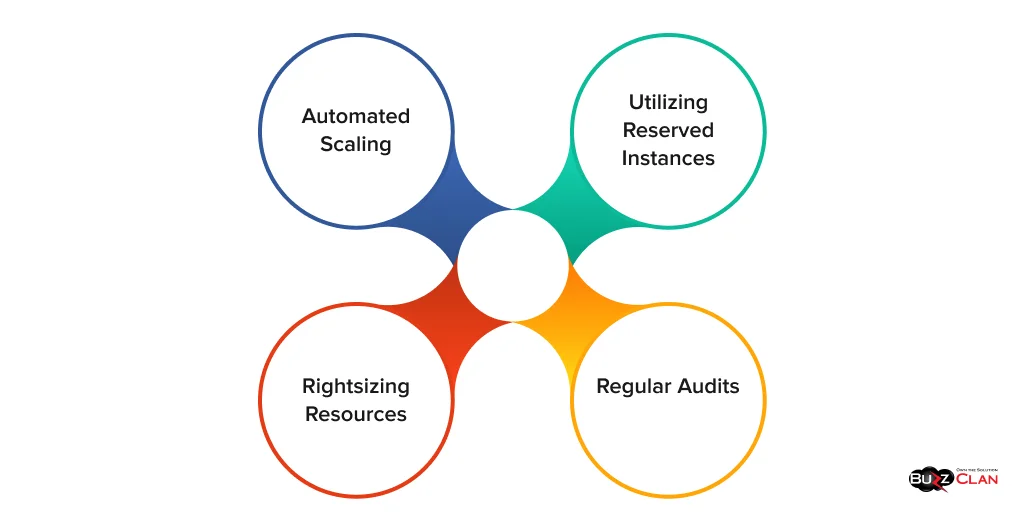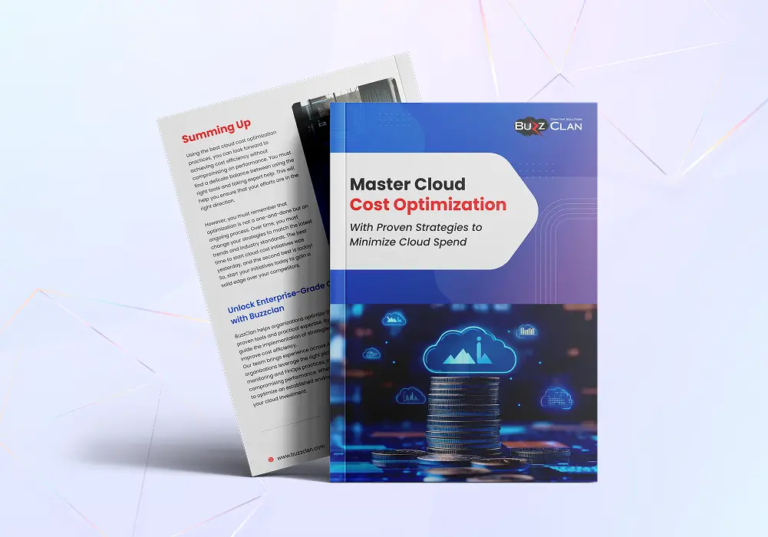Cloud Cost Management and Optimization: The Ultimate Guide to Controlling Your Cloud Spend
Priyanshu Raj
Sep 6, 2024
Introduction
As organizations increasingly embrace cloud technologies to drive digital transformation, effective cloud cost management and optimization have become paramount. The scalability and flexibility offered by cloud services have revolutionized how businesses operate, but they’ve also introduced new challenges in managing and controlling costs. With cloud spending projected to continue upward, organizations must adopt robust strategies and tools to ensure they get the most value from their cloud investments.
This comprehensive guide will delve into the intricacies of cloud cost management and optimization, providing you with the knowledge and strategies needed to control your cloud spending effectively. We’ll explore key concepts, discuss essential strategies, review popular tools and vendor-specific solutions, and share best practices that can help you optimize your cloud costs. Whether you’re just starting your cloud journey or looking to refine your existing cost management practices, this blog will offer valuable insights to help you maximize the return on your cloud investments.
What is Cloud Cost Management and Optimization?
Cloud cost management refers to planning, controlling, and optimizing cloud spending. It involves tracking, analyzing, and forecasting cloud costs to ensure organizations use their cloud resources efficiently and cost-effectively. On the other hand, cloud cost optimization focuses on identifying and implementing strategies to reduce cloud spending without compromising performance or functionality.
Effective cloud cost management and optimization are crucial for several reasons:
- Cost Control: As cloud usage grows, costs can spiral out of control if not properly managed.
- Resource Efficiency: Proper management ensures that cloud resources are used efficiently, avoiding waste.
- Budget Alignment: It helps align cloud spending with business objectives and budgets.
- Performance Optimization: Cost optimization often goes hand-in-hand with performance improvements.
- Competitive Advantage: Efficient cloud cost management can provide a significant competitive edge.
Key Strategies for Cloud Cost Management

Budgeting and Forecasting
Setting accurate budgets and forecasts is fundamental to cloud cost management. This involves:
- Analyzing historical usage patterns
- Considering future growth projections
- Setting realistic budget limits
- Regularly reviewing and adjusting forecasts
Resource Allocation
Efficient resource allocation is critical to avoiding waste. Strategies include:
- Right-sizing instances to match workload requirements
- Implementing auto-scaling to adjust resources based on demand
- Utilizing spot instances for non-critical workloads
- Identifying and eliminating unused or underutilized resources
Usage Monitoring
Continuous monitoring of cloud usage and spending is essential. This involves:
- Implementing real-time monitoring tools
- Setting up alerts for unusual spending patterns
- Regularly reviewing usage reports
- Identifying trends and anomalies in cloud consumption
Tools for Cloud Cost Management and Optimization

Numerous tools are available to help organizations manage and optimize their cloud costs. Some popular options include:
Datadog Cloud Cost Management:
Datadog offers comprehensive cloud cost management capabilities, including:
- Real-time cost visibility across multiple cloud providers
- Cost allocation and tagging
- Anomaly detection and alerting
- Optimization recommendations
AWS Cost Optimization Tools:
Amazon Web Services provides several native tools for cost optimization:
- AWS Cost Explorer: For visualizing and analyzing cloud costs
- AWS Budgets: For setting custom budgets and alerts
- AWS Trusted Advisor: For identifying cost-saving opportunities
- AWS Compute Optimizer: For right-sizing EC2 instances
Google Cloud Cost Management:
Google Cloud offers tools such as:
- Cloud Billing Reports: For detailed cost analysis
- Cloud Billing Budget API: For programmatic budget management
- Recommender: For cost optimization recommendations
Azure Cost Optimization:
Microsoft Azure provides tools, including:
- Azure Cost Management + Billing: For comprehensive cost analysis and management
- Azure Advisor: For cost optimization recommendations
- Azure Reservations: For discounted pricing on reserved resources
VMware Cloud Cost Management
VMware offers solutions like:
- vRealize Operations: For capacity planning and cost optimization
- CloudHealth: For multi-cloud cost management and optimization
ServiceNow Cloud Cost Management
ServiceNow provides features such as:
- Cloud Insights: For cloud cost visibility and optimization
- Cloud Management: For automating cloud operations and cost control
Harness Cloud Cost Management
Harness offers capabilities including:
- Cloud Cost Management: For real-time cloud cost visibility
- Continuous Efficiency: For automated cost optimization
Multi-Cloud Cost Management and Optimization
Cloud cost management comes with its fair share of pros and cons. However, the advantages overweigh the initial hiccups.
Managing costs in multi-cloud environments presents unique challenges:
- Complexity: Multiple billing systems and pricing models
- Visibility: Difficulty in obtaining a unified view of costs across clouds
- Governance: Maintaining consistent policies across different platforms
Strategies for multi-cloud cost optimization include:
- Implementing a centralized cost management platform
- Standardizing tagging and labeling across clouds
- Leveraging cloud-agnostic tools for cost analysis and optimization
- Implementing cross-cloud governance policies
Best Practices for Cloud Cost Management

Rightsizing Resources:
Regularly assess and adjust resource sizes to match actual needs. This involves:
- Analyzing usage patterns
- Identifying over-provisioned resources
- Downsizing or upgrading as necessary
Automated Scaling:
Implement auto-scaling to adjust resources based on demand dynamically. This helps:
- Optimize costs during periods of low usage
- Ensure performance during peak times
- Reduce manual intervention
Utilizing Reserved Instances:
For predictable workloads, leverage reserved instances to:
- Secure significant discounts
- Improve budget predictability
- Optimize long-term cloud spending
Regular Audits:
Conduct regular cost audits to:
- Identify unused or underutilized resources
- Review and optimize reserved instance usage
- Assess the effectiveness of current cost management strategies
Case Studies and Real-World Examples
Businesses worldwide have reaped huge benefits by implementing the right cloud cost management strategies. Here are just a few examples.
Case Study 1: Global E-commerce Company
A leading e-commerce company implemented a comprehensive cloud cost management strategy, resulting in:
- 30% reduction in cloud spending
- Improved resource utilization by 25%
- Enhanced visibility into departmental cloud usage
Key strategies employed:
- Implemented automated tagging for cost allocation
- Utilized reserved instances for steady-state workloads
- Implemented strict governance policies for resource provisioning
Case Study 2: Financial Services Firm
A large financial services firm optimized its multi-cloud environment, achieving:
- 40% cost savings across all cloud platforms
- Improved compliance with financial regulations
- Streamlined cloud operations
Key approaches:
- Implemented a centralized cloud management platform
- Standardized cost allocation and chargeback processes
- Leveraged AI-driven recommendations for cost optimization
Future Trends in Cloud Cost Management and Optimization
Here is what you can look forward to in the upcoming times when it comes to dealing with cloud costs.
AI and Machine Learning:
AI and ML are set to play a significant role in cloud cost management through:
- Predictive analytics for more accurate forecasting
- Automated anomaly detection and resolution
- Intelligent resource optimization recommendations
Automation:
Increased automation in cloud cost optimization processes will lead to:
- Real-time cost optimization actions
- Automated policy enforcement
- Seamless integration with CI/CD pipelines for cost-aware deployments
Emerging Tools and Technologies:
New tools and technologies are emerging to address evolving cloud cost management needs, including:
- FinOps platforms for collaborative cost management
- Blockchain for transparent and secure cost tracking
- Edge computing cost optimization tools
Conclusion
Effective cloud cost management and optimization are essential for organizations to realize the full benefits of cloud computing while maintaining control over their IT spending. By implementing robust strategies, leveraging appropriate tools, and following best practices, businesses can significantly reduce their cloud costs without compromising performance or innovation.
As cloud technologies evolve, so will the approaches to managing and optimizing cloud costs. Staying informed about emerging trends and continuously refining your cost management strategies will be vital to maintaining a competitive edge in the cloud-driven digital landscape.
Remember, cloud cost optimization is not a one-time effort but an ongoing process. Regular monitoring, analysis, and adjustment of your cloud usage and spending will ensure that your organization derives maximum value from its cloud investments.
FAQs

Get In Touch
Follow Us
Table of Contents
- Introduction
- What is Cloud Cost Management and Optimization?
- Key Strategies for Cloud Cost Management
- Tools for Cloud Cost Management and Optimization
- Multi-Cloud Cost Management and Optimization
- Best Practices for Cloud Cost Management
- Case Studies and Real-World Examples
- Future Trends in Cloud Cost Management and Optimization
- Conclusion
- FAQs








